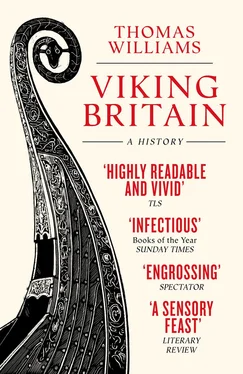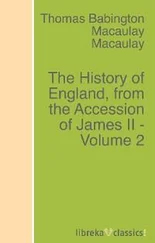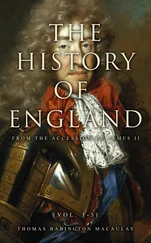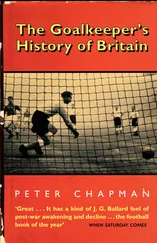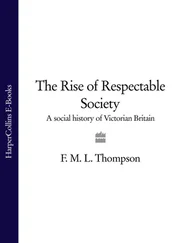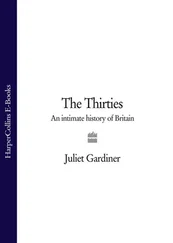The British kingdoms of Wales and Cornwall were by no means the only representatives of Brittonic-speaking culture to survive the Anglo-Saxon cultural takeover. Though some (such as Rheged, Gododdin and Elmet) had perished in the expansion of Northumbria, the British kingdom of Alt Clud (‘the rock of the Clyde’) still held out in the region bordering the Clyde. A shadowy kingdom of obscure origin, Alt Clud had its fortress capital at Dumbarton Rock. The kingdom had spent most of the eighth century fending off the unwelcome advances of its neighbours, and in 780 was burned (by whom, or why, is not known). One of the possible culprits was Alt Clud’s neighbour to the north-east, the substantial and periodically powerful kingdom of the Picts (sometimes referred to as ‘Pictavia’), a realm that had its heartland in northern and eastern Scotland, and which seems to have held sway (at least culturally) over the Orkney and Shetland islands. The most visible and dramatic monuments to Pictish culture are the symbol stones – slabs carved with images of beasts and enigmatic symbols that are most often interpreted as representations of the names of kings and aristocrats. By the eighth century, many of these objects displayed ostentatiously Christian iconography, and it is clear that Christianity had by that time become associated with expressions of power and status: a monastery at Portmahomack, on the Tarbat peninsula in Easter Ross, had been established as early as the sixth century, possibly with royal patronage.17
Pictish power was by no means unchallenged in northern Britain. The kingdom’s main rivals were Northumbria, whose borders extended to the Forth, and whose armies it had repeatedly beaten back during the earlier part of the century, and the kingdom of Dál Riata, a Gaelic-speaking polity spanning the Irish Sea to include Argyll, Lochaber and the north-eastern part of Ulster. Dál Riata had its power-base at Dunadd near Kilmartin, an imposing hill-fort where its kings were believed to have been inaugurated – the impression of a foot, worn into the living rock, may have played a key role in the rituals that were enacted there. By the end of the eighth century, however, Dál Riata was coming under Pictish domination. In 736 Dunadd had been captured by the Pictish king Oengus (he underscored his dominance by dragging the sons of the Dál Riatan king back to Pictavia in chains), and by 811 Dál Riata was being ruled directly by the Pictish king Constantine (r. 789–820). By then, however, a new power was rising, and the Viking impact in northern Britain would have profound consequences for all of its regional players.
There is more that might be said. Ireland, the Isle of Man and the Irish monastic colonies of the Western Isles – Iona chief among them – are all stitched tightly into the events that followed the advent of the Northmen. Nor can the story of the Vikings in Britain be told without some reference to events in continental Europe. Nevertheless, the foregoing paragraphs sketch – in broad outline – the most important contours of British political geography at the time that three strange ships pitched up on the beach at Portland. Though nobody could have known it then, the death of Beaduheard marked the beginning of a series of cataclysmic upheavals that changed Britain for ever. Many of the places mentioned above will be revisited in the chapters that follow; many of the kingdoms will fall.
But before that story can be told, we must return to that beach in Portland, the dark sails receding into the distance. We watch them go, and the coastguard’s questions replay in our minds, too late now for any hope of an answer: ‘Outsiders from across the water […] the sooner you tell where you come from and why, the better.’18
There is no written source that tells these events in the words of the Vikings themselves. For the most part, the people of Scandinavia did not record their history in written form until long after the Viking Age is usually considered to have closed. The sagas and histories, produced in Norway and especially in Iceland, are products of the late twelfth century and later – sometimes much later. To say that the Vikings were illiterate is strictly false, however. As will be seen, they made use of their own runic script for inscriptions marking ownership or memorializing the dead. Moreover, poems composed during the Viking Age survived orally to be written down in later centuries. Nevertheless, very little of the Viking voice survives, and certainly nothing that will explain the identities, motivations and origins of those first violent pioneers. In the face of this Scandinavian silence we must turn and consider who the people of early medieval Britain thought these strangers were, where they had come from and what had driven them on to British shores.
The written sources for the Viking Age in Britain are not a straightforward guide to contemporary events. These were documents written for specific purposes, in different times and in different places, each one reflecting the views of the people who compiled or commissioned them. As such, they are partial and biased, limited by the range of knowledge which their authors possessed, though not by their imaginations. By far the most important sources for this period are the various manuscripts of the Anglo-Saxon Chronicle . The first, and oldest, of these manuscripts is normally referred to as the A text or, sometimes, as the ‘Winchester Chronicle’. It was put together in the late ninth century – probably in the 890s – as part of the intellectual scene that surrounded the court of King Alfred in Wessex. All later historians and chroniclers of the Middle Ages, including the other texts of the Anglo-Saxon Chronicle , rely on the A text to some degree.
The earliest record of the Viking arrival on Portland is found in the A text, and was therefore written down a century later than the events it describes. Although this Chronicle almost certainly contains real traditions and material from older sources, none of these survive for us to make a comparison. The suspicion therefore remains that the view of history which the Chronicle presents is coloured by a bleak century of Scandinavian plunder, conquest and colonization. In particular, one might justly raise an eyebrow at the chronicler’s assertion that these ‘were the first ships of Danish men which came to the land of the English [ Angelcynnes lond ]’: quite apart from the vexed question of what exactly the chronicler meant by ‘ Angelcynnes lond ’, one might well question how, 100 years later and from the perspective of Britain’s most southerly realm, such knowledge could possibly have been possessed.19
The A text tells us, in no uncertain terms, that the newcomers were ‘Danish’ ( denisc ). While this might seem, on the face of things, to be a useful statement of origins, it is not at all certain whether that which seemed ‘danish’ to Anglo-Saxon eyes would necessarily appear ‘Danish’ to our own. As will be seen, the term denisc (along with other generic terms used throughout Britain) in fact came to be applied indiscriminately to people and things held to have emanated from the North. Far more promising is the statement that the newcomers were ‘Northmen’ (Norðmanna) from Hordaland (Hereðalande), now a county of western Norway centred on Bergen. Alas, this is surprisingly (and suspiciously) specific. The earliest record of this notice is found, not in the A text, but in the so-called ‘northern recension’ of the Anglo-Saxon Chronicle , and can be dated no earlier than the mid-eleventh century – at least 250 years after the incident at Portland. This reference may shed more light on the origin of eleventh-century Scandinavian settlers in Northumbria than it does on events in late eighth-century Wessex.20
Читать дальше
